The Cape of Good Hope was a welcome sight for those on the journey beyond the end of the known world. It meant a reprieve from rancid water, salty meat and ships biscuits filled with weevils. For the soldiers and sailors of the Honorable Company, the promise of a new beginning.
Battle of Blaauwberg
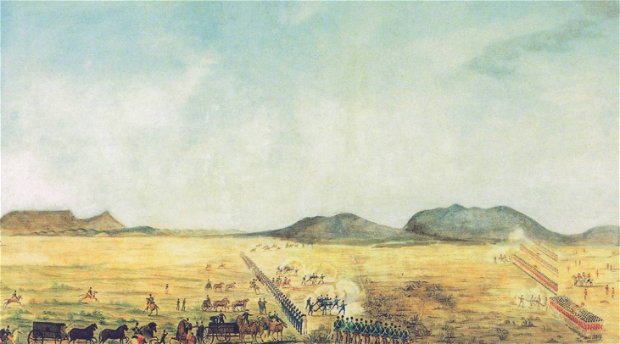
On Saturday, the 26th July 2014 The Durbanville Heritage Society invites you to a presentation on the “Battle of Blaauwberg” to celebrate the opening of the Durbanville Library Hall.
Francois Jacobs, of the "War Games Society" will display his collection of miniature soldiers in a re-construction of the historic "Battle of Blaauwberg" of 1806 which had a profound effect on the history of our country.
Guest speakers Major Willem Steenkamp and Mr Roy Fuller-Gee will present an overview of different aspects of the battle.
Refreshments and copies of Assegais, Drums and Dragoons by Willem Steenkamp will be on sale.
The Date: Saturday 26th July 2014
Venue: The Library Hall, Oxford Road, Durbanville
Time: From 10.00am until 3.00pm
Cost: R10.00 pp, R5.00 Pensioners and Scholars.
Contact: Pam Beck (Secretary) Durbanville Heritage Society
Email: durbanvilleheritage@gmail.com
Tel No: 021 976 2380
The Battle of Blaauwberg 8 January 1806
By Willem Steenkamp
(http://samilitaryhistory.org/vol134ws.html)
Supported by a huge armada of warships and transports, a British invasion force which had landed at Losperd's Bay (today's Melkbosch) defeated a small multi-racial force led by Lt-Gen Jan Willem Janssens of the Batavian Republic, bringing to an end three years of liberal democratic rule at the Cape and setting the scene for the subsequent colonisation of southern and central Africa.
The battle began soon after first light on the morning of 8 January 1806, when the once-peaceful plain behind the Blaauwberg, literally 'Blue Mountain’, just 20km from Cape Town, erupted in an orgy of controlled violence on a scale never before seen at the toe of Africa. Artillery pieces boomed and spat lethal iron cannon-balls back and forth, muskets rattled off individual shots or roared in volleys. Wounded men and horses screamed as they wallowed in their own blood, officers and sergeants shouted orders in voices hoarse with thirst, torrents of sweat turning their powder-stained faces into devils' masks. Drums rattled, Highland bagpipes screeched eerily, overlaying frenzied battle-cries in Dutch, English, French, Gaelic, German, Hungarian and the local dialect that would later be called Afrikaans. Everywhere lay the dead, some in the red coats of Imperial Britain, others in the dark blue or green of the Batavian Republic.
Sir David Baird, British commander at the Battle of Blaauwberg .Two hours later it was over. General Janssens had withdrawn and Lieutenant-General Sir David Baird of His Britannic Majesty's Army was the master of the battlefield and its gory fruit. It was still to be another ten days before a formal capitulation was signed, but for all practical purposes the Cape of Good Hope was now a British colony.
The Battle of Blaauwberg was insignificant when measured against the scale of other battles of the Napoleonic period. It involved a total of no more than about 6000 men and, at its end, the combined dead, wounded and missing amounted to just over 500 - a mere bagatelle compared to epic battles of the period, such as Austerlitz and Waterloo. Yet that brief clash of arms had enormous consequences, not just for the Cape but for all of southern and central Africa, because it drastically and permanently altered the regional architecture of power and set in motion a long train of interconnected events that is still unfolding today, 200 years later.
Blaauwberg is now little more than a footnote in our history-books, in spite of its historical significance and 'cast of characters' who fought on both sides: Dutch, English, Scottish, French, German, Hungarian and Austrian; and, most important of all, the small but valiant multi-racial corps of Cape-born men - white dragoons and commando burghers, coloured light infantrymen and Malay gunners - who stood their ground after many of the Batavian troops had fled, and delayed the British advance long enough to let the Batavian army withdraw in good order.
The Battle of Blaauwberg took place because in 1806 the Cape was a football being kicked around in the greater game of the Napoleonic Wars, just as it was later to be a pawn in the Cold War, and control of the Indian Ocean was strategically vital for both the British and French. The Dutch East India Company had established the Cape outpost, but control of the Indian Ocean was strategically vital for both the British and French, and the Cape's fate was decided in 1803, when it was handed over to the revolutionary Batavian Republic which had taken power in The Netherlands and expelled the Prince of Orange.
In defence of the Cape
The Cape Contingent at Blaauwberg was a small one, only 563 men out of a total of just under 2 000 in the Batavian forces, and consisted of the following units:
181 men of the Hottentot Light Infantry, an efficient corps of professional coloured soldiers whose men had already acquired a fine reputation as occasionally turbulent but valiant fighters. They had been raised by the Dutch East India Company as the Korps Pandoeren in 1787 and, at the Battle of Muizenberg, during the first British invasion, had fought shoulder to shoulder with the Swellendam Light Dragoons. They were then recruited into the British service as the Cape Corps and in 1803, after the handover of the Cape to the Batavian Republic, into the Batavian service as the Hottentot Light Infantry.
224 men of the volunteer 'Burgher Cavalry', organised as light dragoons (mounted infantrymen, who rode to battle but fought on foot), mainly from the Swellendam district. The light dragoons were volunteers, drawn from the farming community. By 1806 they had acquired a fine track record, having fought very well at the Battle of Muizenberg during the first British invasion of 1795; when the DEIC regular troops had fled almost without firing a shot, the dragoons and the coloured soldiers of the Korps Pandoeren counter-attacked so ferociously that they drove a much larger British landing force back almost to the water's edge, and were only forced to retreat by artillery fire.
54 gunners of the 'Javanese Artillery Corps', assisted by l04 auxiliaries such as wagon-drivers. These Malay artillerymen were volunteer citizen-soldiers like the Swellendammers, members of a 'corps of free Javanese' from the 'Mardykers', the substantial community of freed slaves of Asian origin, which by that time was playing an increasingly important role in the social and economic life of the Cape. The corps was raised in 1804 to help in manning the Castle's guns, but served as foot artillery at Blaauwberg, firing traditional Indonesian light cannon known as 'lantaka', the only time these weapons are ever known to have been used in Africa. Less is known about their 104 auxiliaries, but it is known that they represented a cross-section of Cape Town's very cosmopolitan proletariat; some of them were almost certainly blacks who had come to the Cape from Mozambique and elsewhere.
The Cape contingent can only be described as a mixed bag. Some were Christians, some were Muslims, others animists; their skins were of every colour found in mankind. Some had been born free, others were former slaves. Some were professional soldiers, others citizens-in-arms. Their professions ranged from labourer to soldier to shop-keeper to farmer, and their personal condition from prosperous to comfortable to poor. But, as will be seen later in this account, they had three important things in common.
Four seminal events in South African history
Seen against the broader tapestry of the sub-continent's history, the Battle of Blaauwberg, at which a British expeditionary force wrested the Cape of Good Hope from the Batavian Republic, was the third of four seminal events that determined the shape of things to come in an immense swathe of territory. (The fourth, of course, was the election of 1994).
The first seminal event took place before recorded history, when Khoi clans from the hinterland colonised what later came to be known as the Cape of Good Hope, marginalised the original hunter-gatherers (whom they referred to as 'San' or 'Sanqua', meaning robbers or murderers) and evolved into a loose but clearly defined patchwork of independent clans and small tribes. Next, in April 1652, came the members of the Dutch East India Company under Jan van Riebeeck, who arrived at the Cape to create a revictualling and repair station for DEIC ships undertaking the long haul from Europe to the spice-growing countries of the Far East, where the company had established a trading centre called Batavia in what is now Indonesia, and the equally arduous journey home. This event had some unplanned consequences: expansion into agriculture owing to the Khoi's reluctance to cultivate or to trade off too much of their livestock, which were a status symbol; the unofficial establishment of Islam at the tip of Africa through the importation of slaves, freemen and exiles from what is today Indonesia and its neighbouring countries, as well as from India, as DEIC policy did not allow for the enslavement or conscription of the local inhabitants; and the demise of the fragile and disunited Khoi social structure in the region (the smallpox epidemic brought by ships from the Far East in 1713 had a particularly devastating effect), which gave rise to a new, mixed society at the Cape.
The Battle of Blaauwberg, and its precursor, the first British occupation of the Cape, 1795-1803, represent the third seminal event in southern Africa's history - colonialism and its legacy.
The first British occupation of the Cape
The Cape was strategically as well as commercially important to Europe. Like the Dutch, the British and French had been heavily involved in the Far Eastern trade since the seventeenth century, and had acquired substantial colonial holdings there. Possession of the only existing revictualling and ship-repair station half-way between West and East became crucial from a military as well as an economic point of view.
Sir Francis Baring, chairman of the English East India Company, put it succinctly in a January 1795 letter to the British Secretary of State for War, Henry Dundas, when he pointed out that the Cape 'commands the passage to and from India as effectively as Gibraltar does the Mediterranean'. Equally trenchantly, Dundas's Under-Secretary noted that although the Cape was 'a feather in the hands of the Dutch' it would become 'a sword in the hands of France'.
The British government pressured the Prince of Orange into authorising Dutch naval commanders to allow British warships to defend the Cape against the French and into ordering Commissioner A J Sluysken to accommodate British troops to prevent a French invasion. It then despatched three squadrons of warships with several thousand soldiers on board.
On 11 June 1795 the first two squadrons, under Vice Admiral G K Elphinstone, anchored in False Bay, which (unlike Table Bay) was poorly fortified, and entered into negotiations with Sluysken and his military commander, Colonel Robert Jacob Gordon. It soon became evident, however, that, far from merely garrisoning the Cape against the French, they wanted full control over it. Negotiations broke down and on 14 July the British landed soldiers at Simon's Town and occupied it.
On 7 August a 1 600-strong force consisting of soldiers and two battalions of seamen disembarked at Muizenberg and advanced on the Dutch positions there, which were defended by 287 infantrymen and 150 artillerymen of the VOC's regular garrison, as well as 200 white citizen-soldiers which included light dragoons from as far afield as Swellendam, and 150 coloured soldiers of the Korps Pandoeren.
To their surprise they encountered little resistance; the officer in charge, Lieutenant-Colonel C M W de Lille, had been ordered to offer only a token resistance. However, the citizen-soldiers - all of whom supported the Batavian Republic - and the Pandoeren, gave a spirited resistance. They launched a fierce flanking attack and in spite of their small numbers forced the British to retreat, then pursued them for some distance until they were forced to desist by fire from some of the abandoned Dutch guns that the British had turned on them.
Several weeks of guerrilla warfare followed, but on 3 September the third British squadron arrived with 2500 soldiers and the final advance on Cape Town began. On 14 September a 24-hour truce was negotiated and the following day the Cape surrendered. Thus ended a short and ignominious campaign, of which the only highlight had been the heroic repelling of 1 600 British soldiers and sailors by less than 400 white and coloured soldiers most of them citizens-in-arms or barely trained recruits unproven in battle.
The invasion of the Cape was, to all intents and purposes, the death-blow for the faltering Dutch East India Company and when the British reluctantly relinquished the Cape in December 1802 in terms of the short-lived Treaty of Amiens, they handed it over to the Batavian Republic. It was a significant moment in South African history. For the first time, the Cape had a national identity. It was no longer either a scattering of individual tribes or a commercial outpost run by the Dutch East India Company, or even a colony; it was now part of the democratic Batavian Republic and its people were Batavian citizens. This meant that, for the first time, the Cape, led by the new Governor-General, Lt-Gen J W Janssens, and, initially, Commissioner Abraham de Mist, was being governed for and by its inhabitants rather than managed as a virtual branch office of the Dutch East India Company's headquarters in Indonesia.
Janssens and De Mist forbade the importation of slaves, preparatory to abolishing slavery for good. They established a non-racial qualified franchise; they freed trade so that the inhabitants could do business directly with any passing ship or even with Europe. Schools and agriculture were upgraded. Government finances were opened for scrutiny by the people. The Islamic faith, which had previously been tolerated but not officially recognised by either the Company or the British, was now accorded equality before the law and full legal protection. It was an amazing transformation; within less than three years the Cape had become the only liberal democracy in Africa and, in fact, in most of the world. But Batavian rule at the Cape was destined to come to an abrupt end.
The second British occupation of the Cape
In 1805 the British decided to return, this time for good. The French had suffered a devastating naval defeat at the Battle of Trafalgar, but their maritime fighting forces remained formidable; with the Cape as a secure base and Mauritius also in British hands, the Royal Navy could dominate the southern oceans.
In August 1805, as Napoleon massed forces at Boulogne to invade England, a British force sailed away on a secret mission to re-take the Cape. It consisted of 61 warships and transport vessels commanded by Vice-Admiral Sir Home Popham and 6 654 soldiers and marines under Major-General Sir David Baird. It was a formidable force indeed and, in addition, Baird knew the Cape well from serving there after the 1795 invasion.
On 4 January 1806 Janssens received definite tidings of the British arrival off the coast, and immediately began mobilising both his regular soldiers and his local forces, most of them part-time citizen-soldiers. To call in the latter, the chain of signal guns stretching inland for almost 250km began firing in sequence.
It was the very worst time for such a summons. Crops were ripening and could not be left unattended, and it was so hot that many of the outlying burghers had to travel at night or risk killing their horses. As a result, Janssens had been able to muster only about 2000 soldiers by the time the British arrived in Table Bay on 5 January: the mercenaries of the Regiment Waldeck, two regular Batavian battalions, a squadron of Batavian light dragoons, a troop of Batavian horse artillery, 240 sailors and marines from two beached French warships, the Atalante and the Napoleon, and his force of local men described above.
There was a howling south-easter which made conditions in Table Bay so bad that Popham concluded he would be unable to land, and diverted a portion of his force to Saldanha Bay to make landfall there and then advance on Cape Town. But then the wind and sea abated to a certain extent, and Popham decided to risk a landing.
On the morning of 6 January Popham ordered that a small merchantman be scuttled next to a sandbank at Losperd's Bay (now Melkbosch) to form a breakwater, and Baird started landing his troops, although the sea was still so rough that 36 soldiers drowned when their boat capsized. There was light resistance from some skirmishers of the Swellendam Light Dragoons, but Janssens did not dare to muster any forces along the shoreline because of the danger that they would be bombarded by the British warships. The invaders' advance started without delay.
It was a race to reach the commanding heights of Blaauwberg, and the British won by a hair, although only after great suffering in dragging their artillery pieces over the dunes. Robbed of the heights, Janssens formed an extended line on the plain beneath it, with his left flank protected by the burghers and Swellendam Light Dragoons on an outcrop of Blaauwberg called Kleinberg. His plan was to hold the British left flank with his right, allowing him to roll up the British line with his left flank. When his men were in position, he rode up and down the line, exhorting and encouraging them. In spite of their perilous situation, all the soldiers cheered him, except the Austrian and Hungarian mercenaries of the Regiment Waldeck, who maintained a sullen and, as it transpired, ominous silence.
Baird divined Janssens's intentions and divided his force into two columns - the left consisting of the Highland Brigade (the 71st, 72nd and 93rd Regiments) under Brig-Gen R C Ferguson, and the right, of the 24th, 59th and 83rd Regiments under his brother, Lt-Col John Baird. There were also between 500 and 600 sailors and marines, dragging two howitzers and six small field-guns.
The battle commenced at 05.00 on 8 January, with the 24th Regiment attacking the burghers on Kleinberg and finally dislodging them after a fierce fight that left a captain and at least fifteen men dead and many other British soldiers wounded. By now the Highland Brigade was advancing amid general cannon-fire from both sides, and some cannon-balls landed among the Regiment Waldeck's right flank, causing great despondency. The Highlanders fired their muskets and then fixed bayonets and charged, shouting terrifying Gaelic war-cries while their bagpipes screamed their ancient battle-music.
Battle of Blaauwberg, Janssens tries to rally the Waldeck Regiment The Waldeckers allowed the Highlanders to approach within 100 yards (90m) of their front. Then, instead of mowing them down with a volley at close range, they broke and ran. The left wing of one Batavian battalion, the 22nd Regiment of the Line, was now unsupported and also began to crumble. Janssens managed to rally it, but the momentary failure had sown a fatal weakness in the Dutch line. As its flank was threatened, Janssens' other Batavian battalion, the 9th Batavian Rifles, also started to withdraw. The Frenchmen, however, stayed in place with both flanks unsecured, until they were forced back after suffering heavy casualties. The handful of Batavian dragoons also stood fast, but Janssens eventually ordered them to withdraw as well to prevent their unnecessary annihilation.
The remainder of Janssens' force - the burgher commandos and light dragoons, the Hottentot Light Infantry, the Muslim artillerymen, and the Batavian horse artillery - did not follow suit. Although outgunned and vastly outnumbered, they doggedly stood their ground in the face of intense fire. Eventually, Janssens, fearing for their very survival, ordered them to retire, which they did in good order. Only one Batavian gun was lost, due to the gun-horses being killed, but the gunners made sure to spike it so that it could not be turned against them.
Although they suffered severely for their bravery, Janssens' force succeeded in delaying the British advance long enough to allow his rear-guard to escape to Rietvlei. There he regrouped his forces - all except for the Waldeckers, most of whom he sent back to Cape Town in disgrace - and withdrew to the Hottentots-Holland mountains. Thus ended the Battle of Blaauwberg, the only true battle to be fought within sight of Cape Town in 400 years.
Although a small bloodletting by the standards of the Napoleonic Wars, the Battle of Blaauwberg cost Janssens' small army dearly, particularly his Cape men - 337 on the Dutch side were not there to answer their names when the rolls were called afterwards.
What did they achieve?
The sacrifice of the Cape men, Frenchmen and Batavians who stood fast, was not in vain, because they performed one all-important service: they held the British line long enough to allow Janssens to withdraw most of his forces, including his supply wagons and spare horses. This enabled him to take up new positions inland and to negotiate terms of capitulation that contained the most favourable conditions possible for the people of the Cape and their soldiers, particularly the Hottentot Light Infantry, which had particularly distinguished itself. Had his army been destroyed at Blaauwberg, the result would have been an unconditional surrender in which the Cape people would have had no say about their future. As it was, the transition of the Cape from Batavian possession to full-blown British colony took place as smoothly and painlessly as possible, thanks largely to the small but valiant band of forgotten heroes of the Battle of Blaauwberg.
Why did they do it?
One can speculate as to why this little multi-racial, multi-faith Cape contingent fought so hard. One reason might well have been that, regardless of their origins or personal differences, they were Cape-born men rather than settlers or expatriates, and knew no other home. They spoke the same creole language that had evolved between them, which would eventually become Afrikaans. They also shared a common interest in the outcome of the battle. The Swellendammers, for example, had been Batavian sympathisers for years, and had tasted the fruits of prosperity as a result of the Janssens-De Mist reforms. For the men of the Hottentot Light Infantry, the Batavian Republic had surely opened up a new vista for the future. And the Malays were obviously intensely aware of the fact that the Batavians had given full protection and recognition to their religion and had initiated the process of abolishing slavery altogether. Now they stood to lose a great deal and indeed they lost it all. Instead of being abolished, slavery lingered on until the 1830s and as a crown colony ruled by a non-elected Governor the Cape would not taste even limited internal self-government for another half-century. But the larger picture shows that this British conquest of the Cape also radically changed the course of history of the entire southern portion of the African continent.
To the British, the 1806 invasion was no more than a logical follow-on to the victory at Cape Trafalgar, the tying up of yet another loose end in their long hard war against Napoleon. By the nature of things, neither they nor their unenthusiastic new subjects at the Cape had any inkling of the pattern of events that was to unfold as a result of their conquest. The most fundamental of these events was the mass migration of farmers and others resolved to move beyond the British writ which started in the late 1830s and became known as 'the Great Trek'. Decades of roving and intermittent warfare followed, with British influence never far behind, so that by the beginning of the 20th century all of what is now South Africa was in British hands.
It would not be too far-fetched to say that classic colonialism took root in South Africa not in 1652 but in 1806. The Dutch East India Company had no interest in empire-building as such, and neither had the Batavian Republic. The British, however, were concerned with building an empire. Before 1806, European influence at the tip of southern Africa was still largely confined to the area of the old DEIC dominance. After that, it began to move outwards to encompass all of southern and most of central Africa. Is there a positive message emanating from Blaauwberg? It depends on one's outlook. It could be said that Blaauwberg brought immense suffering and troubles in its wake. It could also be said that, in a very real sense, it changed world history for the ultimate good, and that the South African nation that arose in its wake might yet be Africa's salvation. What no-one can dispute is that when the first redcoat planted his boots on the sands of Losperd's Bay, the future of southern Africa, and the world, took a turn that not one of the men who were soon to be frantically loading and firing their muskets amid the broiling clouds of powder-smoke at Blaauwberg could have anticipated in their wildest imaginings.
The forgotten heroes of Blaauwberg
The Cape men who fought so heroically at Blaauwberg have been forgotten. There is no memorial, not even a simple plaque on any wall, to commemorate their deeds and mourn the passing of those who fell. There is no list of their honoured dead, they are not mentioned in most history books, and the Battle of Blaauwberg itself is dismissed in a few cursory paragraphs. It is almost as if those who took part never existed except in legend, even though thousands of their direct descendants live in Cape Town to this day, a mere cannon-shot from where they died, and the bones of at least some of them must still lie under the soil of the battlefield.
Every year Capetonians gather to pay tribute to the heroes of Delville Wood and El Alamein, and all the other famous battles in which our soldiers fought; but the heroes of Blaauwberg sleep in the undeserved obscurity to which we, their flesh and blood, have consigned them through our own neglect.
Further Reading
The Social and Military Heritage of the Cape is a fascinating saga with heroes and villains of all color and creed. The Chavonnes Battery invites you to discover the strategic Commercial and Military importance of Cape Town and the harbor in global trade and some of the character’s who left a footprint here. Meander among the Archaeology ruins, explore the international photographic exhibitions, join a Guided Walking Tour or fire a real...
We asked Willem Steenkamp, "Why Lion's Head?". He shared the story of black-mane Cape lions and adventurers, all colorful characters...
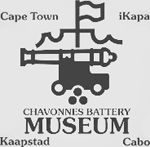

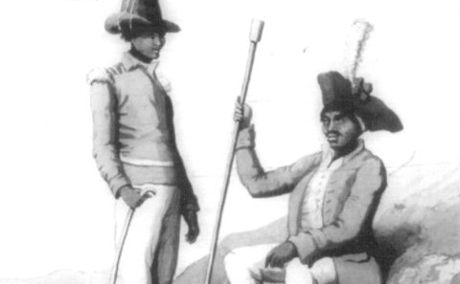
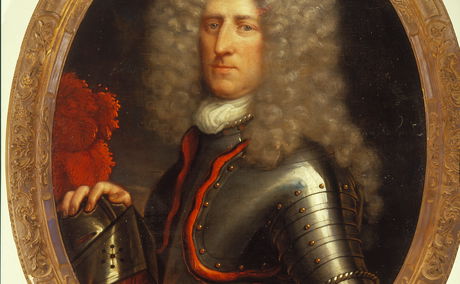
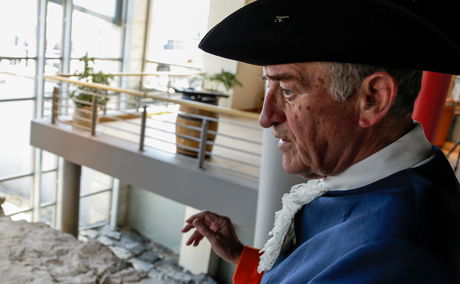
Share This Post